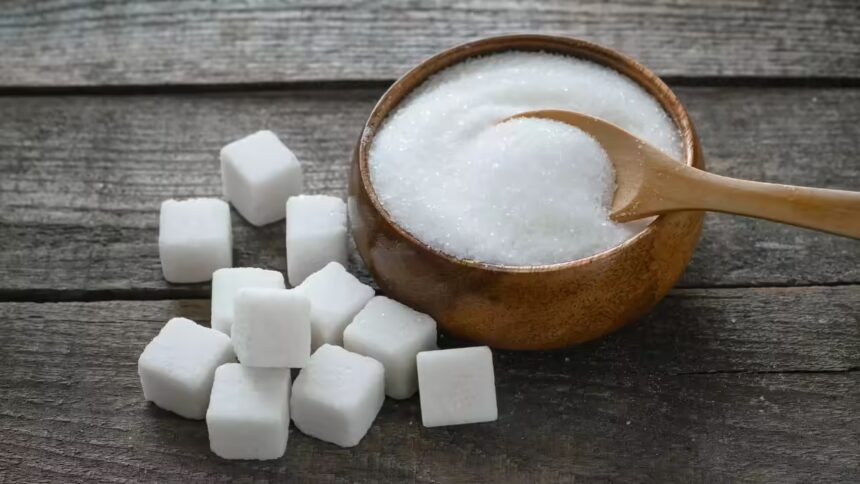Sugar cravings are one of the most common health challenges today. Whether it is reaching for sweets after meals, sipping sugary drinks during work, or craving desserts late at night, these habits can slowly harm long-term health. The good news is that sugar cravings can be reduced naturally with simple lifestyle changes. By understanding how cravings work and taking small steps daily, anyone can enjoy a healthier, balanced life without feeling deprived.
This practical guide explains why sugar cravings happen, how to weaken them, and what daily habits can support long-term control. If you are looking for more helpful wellness articles, you can also explore guides on HealthGuiders, where we share simple, science-backed tips for everyday health.
Why we crave sugar in the first place
Sugar cravings do not happen by accident. They are triggered by a mix of physical, emotional, and lifestyle factors. When we understand these triggers, it becomes easier to change them.
One of the biggest reasons for sugar cravings is unstable blood sugar. When meals lack protein or fiber, blood sugar can drop quickly, and the body asks for a fast energy source, which is usually sugar. Another reason is stress. When stress hormones rise, the brain looks for comfort foods, especially sweets, because they give a quick sense of relief.
Lack of sleep also plays a major role. Poor sleep increases hunger hormones, making sugary foods more tempting. Many people also eat sweets out of habit, boredom, or emotional reasons rather than actual hunger. Over time, the brain becomes used to the quick reward that sugar provides, and this leads to stronger cravings.
How sugar cravings affect long-term health
Sugar may give short-term pleasure, but long-term excess can affect overall well-being. High sugar intake is linked with weight gain, increased hunger, low energy, poor sleep, and risk of lifestyle diseases. It can also affect mood, gut health, and skin clarity.
By reducing cravings, you improve metabolism, maintain stable energy throughout the day, and protect long-term health. Many people also notice better digestion, sharper focus, and reduced inflammation once their sugar intake goes down.
Healthy habits to reduce sugar cravings naturally
Reducing sugar cravings does not mean completely removing sweets from life. Instead, it means gaining control over your choices rather than letting cravings control you. The following habits can help reduce cravings in a balanced, sustainable way.
Focus on protein-rich meals
Eating protein in every meal helps keep you full and prevents sudden hunger spikes. Foods like eggs, paneer, dal, beans, tofu, Greek yogurt, chicken, and nuts release energy slowly, which keeps your blood sugar stable. When your meals have enough protein, your body is less likely to demand sugar for quick energy.
Add more fiber to your diet
Fiber also slows down digestion and helps maintain stable blood sugar. Adding vegetables, fruits, whole grains, oats, chia seeds, and sprouts to meals keeps you full for a long time. When your stomach feels satisfied, you naturally crave less sugar.
Stay hydrated throughout the day
Many people confuse thirst with sugar cravings. When the body is dehydrated, it may signal hunger or desire for sweets. Drinking water frequently keeps your body balanced and reduces unnecessary cravings. Herbal teas and infused water with lemon, mint, or cucumber can also help.
Do not skip meals
Skipping meals leads to intense hunger and strong sugar cravings later in the day. Eating regularly at the right time keeps energy levels stable. Balanced meals prevent the brain from demanding sugary snacks to get instant energy. Even a small, nutritious snack like nuts or fruit can help avoid evening sugar cravings.
Improve your sleep quality
Poor sleep increases cravings because it raises hunger hormones and reduces the brain’s ability to control impulses. Sleeping 7–8 hours every night naturally reduces sugar cravings. Creating a relaxing bedtime routine, staying away from screens, and keeping the bedroom dark can improve sleep quality.
Manage stress in healthy ways
Stress eating is extremely common. When we feel overwhelmed, sugar can feel comforting for a few moments. However, this becomes a habit over time. Practicing relaxation techniques like meditation, walking, deep breathing, gentle stretching, or journaling helps manage stress without depending on sugary foods. Even small daily stress-relief activities can make a big difference.
Build the habit of mindful eating
Mindful eating means paying attention to what you eat, how it tastes, and how it makes you feel. Many sugar cravings come from emotional triggers rather than true hunger. Taking a pause before eating sweets helps you understand whether the craving is physical or emotional. Over time, mindful eating helps reduce overeating and unnecessary snacking.
Replace sugar with healthier options
If you suddenly stop all sweets, your brain may resist. Instead, it is easier to replace sugary snacks with healthier options. Fresh fruits, dark chocolate, nuts, dates, yogurt, smoothies, or coconut water can satisfy your sweet tooth in a healthier way. Slowly, your taste buds will adjust, and intense cravings will fade.
Reduce hidden sugars in packaged foods
Most packaged foods contain added sugar, even if they taste salty. Checking food labels and choosing low-sugar options prevents accidental sugar intake. When you become aware of hidden sugars in breads, sauces, breakfast cereals, and snacks, it becomes easier to make smarter choices. For more guidance on food labels, you can also explore other health guides on HealthGuiders.
Stay active throughout the day
Physical activity helps regulate mood, balance hormones, and reduce cravings. You do not need heavy workouts. Simple movements like walking, stretching, taking the stairs, or doing light exercises improve your metabolism and reduce emotional hunger. Staying active also releases feel-good hormones that reduce the need for sugary comfort foods.
How to train your taste buds to enjoy less sugar
Taste buds can adapt very quickly. When you slowly reduce sugar in tea, coffee, desserts, and snacks, your taste buds become more sensitive to natural sweetness. After a few weeks, you will find that foods you once enjoyed now taste too sweet.
Small steps like reducing sugar by half, choosing unsweetened versions of foods, or adding spices like cinnamon and cardamom can help you enjoy flavors without relying on sugar.
Creating a long-term plan for a low-sugar lifestyle
A long-term low-sugar lifestyle is not about strict rules. It is about steady habits that you enjoy following. Start with small goals such as drinking more water, eating balanced meals, or reducing daily sugar by one spoon. With time, cravings become weaker and healthier choices become natural.
It also helps to prepare your home environment. Keeping fresh fruits, nuts, and healthy snacks accessible makes good choices easier. Planning meals ahead and keeping sugar treats for special occasions creates a balanced approach.
With consistency, reducing sugar becomes a lifestyle instead of a temporary diet.
Frequently asked questions
How long does it take to reduce sugar cravings?
Most people notice a reduction in cravings within one to two weeks of reducing sugar intake. Taste buds adapt quickly, and stable blood sugar levels make cravings weaker.
Can I still eat sweets while reducing cravings?
Yes. You do not need to remove sweets completely. The goal is moderation. Enjoying sweets in limited amounts and choosing healthier versions helps maintain balance.
What should I do if I get sudden late-night sugar cravings?
Drink a glass of water first because many cravings are related to thirst. If you still feel hungry, choose healthier options like fruit, yogurt, or herbal tea.
Are artificial sweeteners helpful for reducing sugar cravings?
Artificial sweeteners may help temporarily, but they can keep your taste buds dependent on sweetness. Natural options like fruits and small portions of dark chocolate are better long-term choices.
What is the best first step to reducing sugar cravings?
The easiest first step is adding more protein and fiber to meals. This keeps your energy stable and reduces the body’s demand for sugary foods.
Final thoughts and CTA
Reducing sugar cravings is one of the most helpful changes you can make for lifelong health. With simple daily habits, you can enjoy better energy, stable mood, and improved overall well-being. The goal is not perfection but consistency. When you make small changes every day, sugar loses its control over your life.
For more helpful health guides, tips, and daily wellness habits, explore our latest blogs on HealthGuiders. Stay informed, stay healthy, and keep taking small steps toward a better lifestyle.




